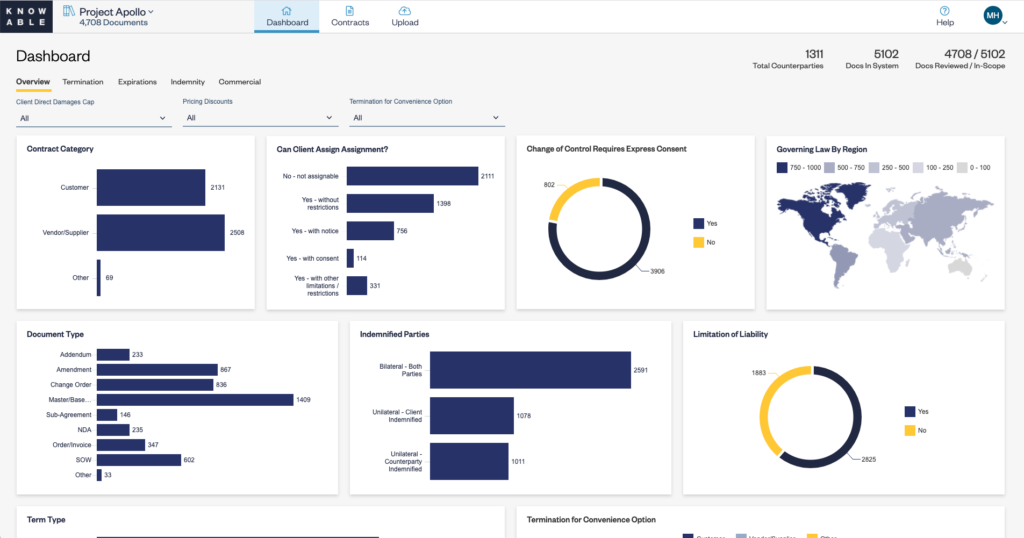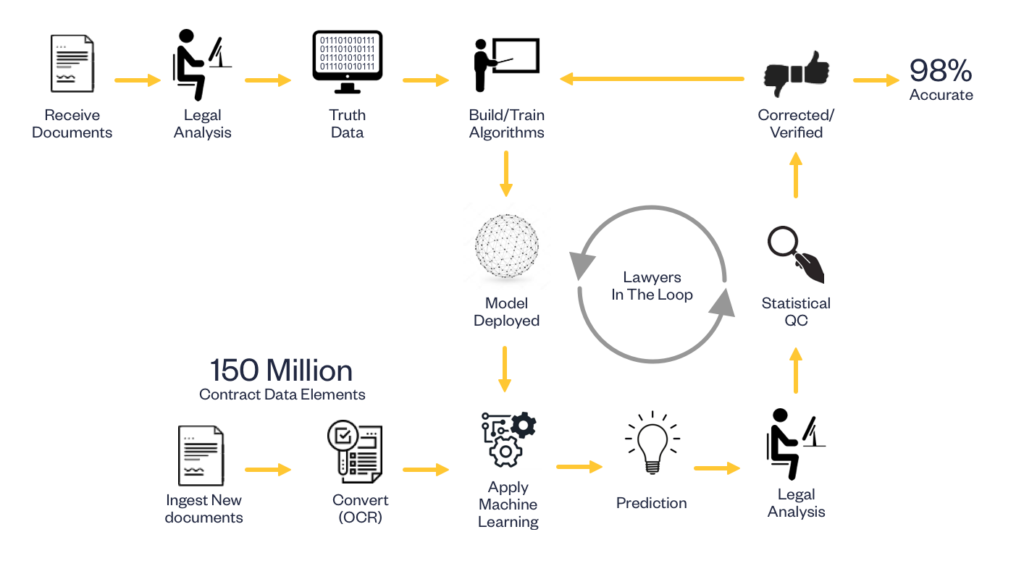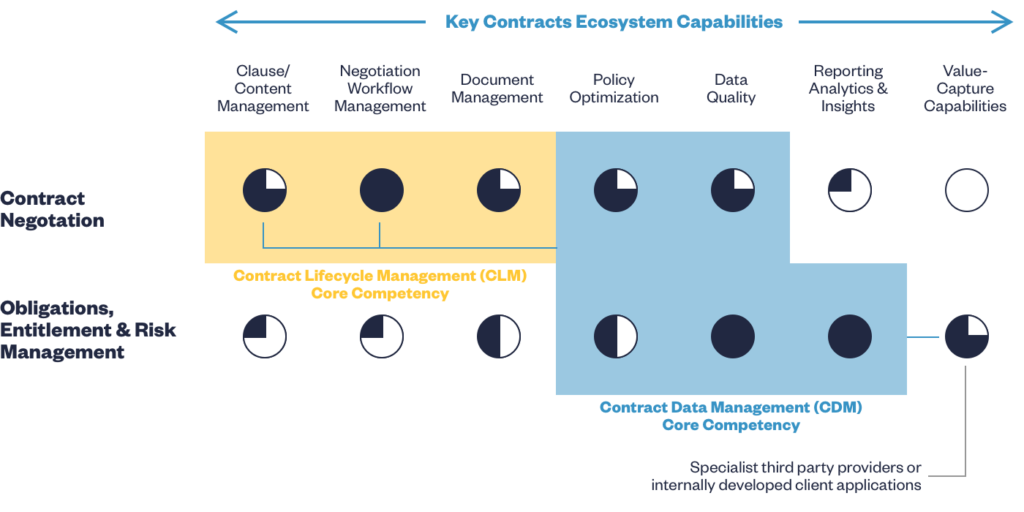This blog post is the second in a series of articles setting out what Contract Data Management (CDM) is and how it differs from, but also complements traditional Contract Lifecycle Management (CLM) in powerful ways.
The first post in the series explained the importance of effective CDM and how scale value creation opportunities within large enterprises today are derived from achieving usable transparency across the organization’s contracts portfolio –in many ways more so than in improving the contract negotiation process.
The next blog post in this series will look at the distinctive capabilities required for effective CDM, how they differ from those most CLMs primarily depend on, but also how they can supplement these in powerfully synergistic ways
Later posts will investigate in more detail how CDM can be a key to successful CLM implementation, mitigating some of the most common CLM deployment challenges while also significantly augmenting the potential for CLMs to deliver strong outcomes.
Finally, this series will also explain how CDM can help enterprises adopt the “right tool for each job” –that is, the combination of contracts capabilities, whether CLM or contracting point solutions, best suited to each business’ specific needs, even where those needs diverge across the organization and are best served by deploying different tool sets for different tasks.
What’s required for effective CDM?
As discussed in this post, structured contract data is a critical enabler for a number of high-value use cases within modern enterprises –but can only be effectively delivered with a dedicated solution: CDM. But if CDM is so compelling, then surely the leading contracts management solutions in the market are already solving for that, right?

Well… no. Not really. The challenge lies in the fact that the capabilities needed to create structured contract data and make it readily usable are very different from what CLMs in particular have historically focused on.
The focus of CLM solutions has always primarily been to improve the contract negotiation process, mainly by developing solutions with robust authoring, content management, workflow management, enablement and automation capabilities.
All of which can indeed deliver better negotiation outcomes, faster, with fewer resources expended along the way. Add e-signature and a functional document repository, and you’ve got decent document management capabilities.
But barring select exceptions (e.g., non-negotiated or very-lightly negotiated agreements, that capability set does not allow businesses to meaningfully capture –and therefore ultimately understand—what is in their executed contracts.
By contrast, the competencies required for effective CDM aim to:
- Interpret contract prose and convert it into standardized, structured data
- At the lowest possible cost
- Across the full breadth of applicable documents

With repository capabilities enabling access for all users to the data they need, when they need it (whether via robust user rights management and access controls, API integrations to downstream systems, etc.)
- Including flexible reporting tools that deliver usable real-world insights
- All supported by effective data governance that ensure ongoing ‘golden source’ status for the information in the repository
Delivering these outcomes requires a distinctive set of competencies, harnessing AI and machine learning to either capture information directly, or vastly accelerate human interpretation of that information. Put simply, the overlap between the capabilities needed for effective negotiation workflow enablement (i.e., what CLMs are primarily concerned with), and what’s needed for effective CDM, is minimal.
But can’t CLM do a lot of this anyway?
Still, you might think that the best way to capture structured data from contracts would be via the tools that enable the creation of the relevant prose in the first place. And it is possible that, a few years (more likely decades) from now, when contracts become universally standardized to support smart contracting and blockchain applications, that might indeed be true.
But for now, and for the foreseeable future, the preponderance of B2B contracts –at least those that drive the most value in the enterprise—will be heavily negotiated, with the result being a virtually limitless spectrum of complex linguistic outcomes. And that will continue to make the post-execution contract data structuring challenge an arduous one that requires deep dedicated expertise.
Another notion worth dispelling: simply having the end-user (typically the person negotiating the contract) manually capture the desired information is no ‘easy button’ solution to this challenge.
Experience has shown, time and time again, that this is a bad idea. Firstly, because it doesn’t yield good quality data: as knowledgeable as the person negotiating a contract might be about its contents, he or she is seldom excited to spend time coding the relevant information into a database –and frequently makes mistakes as a result.
More to the point, one person’s interpretation of what a given piece of legal prose means is frequently different from another’s. After all, the Supreme Court might be the only place where one ever sees more than 2 lawyers agreeing on anything (and even then…) The upshot being that absent a rigorous process for ensuring the calibration, harmonization and syndication of interpretive guidance, even data extracted and structured precisely per the specific preference of any one individual may well be regarded as being in error by another person even within the same client organization.
Perhaps most important, however, is the impact that imposing data capture responsibilities upon the end-user has on user experience and, ultimately, adoption. For one thing, data entry is hardly the best use of an experienced negotiator’s time. The opportunity cost of that effort is significant.
For another, users will find ways to avoid activities they perceive as tedious and repetitive. That will in turn yield lower user satisfaction, reduced engagement with the tool, and undermine usage. The history of CLM as an industry is littered with failed implementations for exactly this reason.
So where does that leave me – What solution should I buy?
CLM solutions are uniquely capable tools if your goal is to better manage the contracting process, with various providers having different focus (e.g., supporting the sales team vs. the procurement organization) and strengths or weaknesses (e.g., document generation vs. workflow automation vs. counterparty interaction management).
So if your objective is primarily to improve the contracting process, then a CLM solution should definitely be in your sights (though you should take a look at this blog post, which goes into further detail as to how CDM can significantly enhance and de-risk new CLM deployments).
But if your primary objective is to better manage your contractual rights and obligations, not to mention your contracts portfolio itself –e.g. easily identify outlier agreements in need of remediation, quickly respond to regulatory or business events, enable effective cost minimization, revenue optimization or risk mitigation initiatives, track policy adherence and generate insights that can drive better policy decision, etc.—then CDM is what you’re really looking for. Starting this journey with a CLM solution really amounts to choosing the wrong tool for the job.
At the end of the day, though, a high-performing contracting ecosystem will ultimately need both: the ability to effectively manage the process of creating new contracts AND the ability to better manage contractual rights and obligations. And strong synergies do exist between what CLM and CDM solutions do well –to name just a few:
- CLM can seamlessly automate the capture of very simple or known-unchanged data, reducing the scope effort needed to acquire that data for CDM
- The amount of end-user effort needed to submit contracts for CDM processing can be dramatically reduced via simple e-signature integration with the CLM negotiation workflow solution
- CDM insights on historical negotiation outcomes can significantly improve both ongoing adherence to policy and the quality of negotiated outcomes if effectively surfaced in the negotiation workflow (for instance, when reviewing counterparty markup, or in making approvals decisions)

But just because both CDM and CLM capabilities are ultimately needed doesn’t mean the order in which you deploy them is irrelevant. After all, a CLM workflow solution is only as good as the policies it enables and automates –and ‘better’ policies come from having a better understanding of historical negotiation outcomes, which CDM is uniquely able to deliver.
Indeed, the next blog post in this series will dive into the ways that CDM can be leveraged as a precursor to CLM to dramatically improve prospects when the latter is introduced – augmenting the CLM’s capabilities, accelerating deployment, and de-risking implementation.
Brendan Nelson is EVP for Client Service & Success, responsible for Knowable’s service delivery operations globally.
Previously, Brendan was SVP of Product at Axiom, overseeing the development of that company’s solutions portfolio. Before joining Axiom, Brendan was a Director of Client Strategy for Citi Global Markets and, prior to that, he was a member of McKinsey & Co.’s Risk Practice.
Brendan holds law degrees from Columbia Law School and The Sorbonne, as well as an undergraduate degree from Williams College.